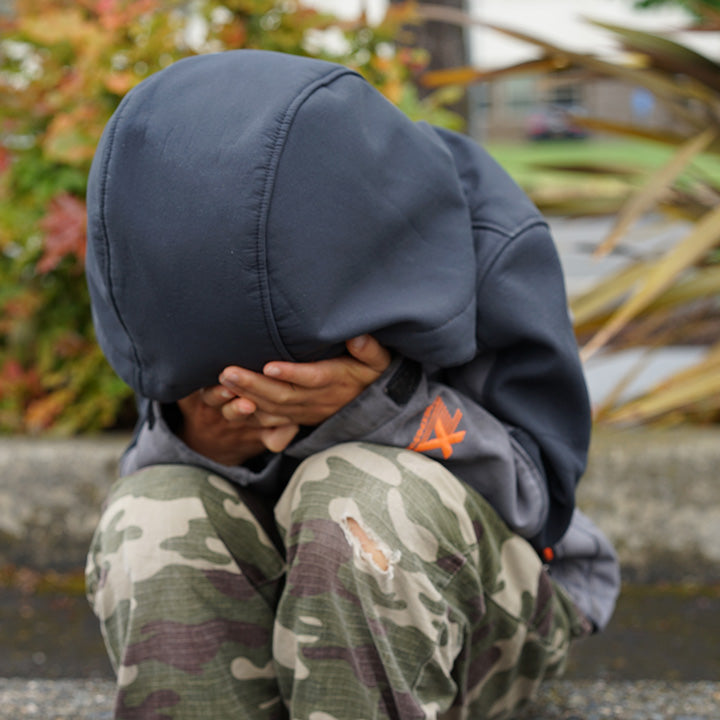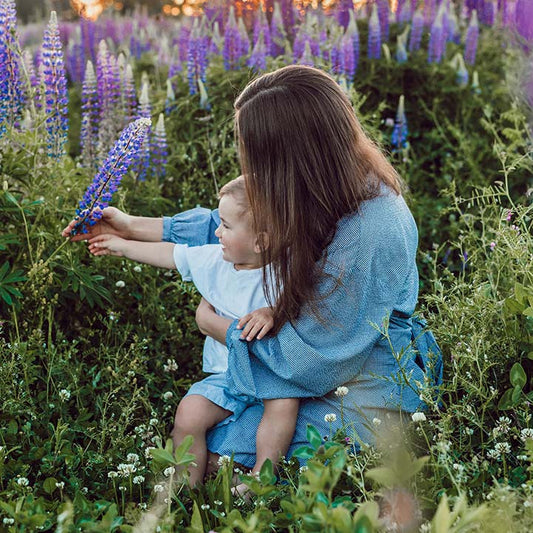“Sit in the shade. Want to sit in the shade!”
Twenty minutes later we are still there. Three-quarters of the trail lies between us and the car, and my toddler is currently lying on his back not caring where he is, only that he doesn’t want to go any further. My goal of encouraging my son to love the outdoors seems further and further away by the minute.
“Teaching children about the natural world should be seen as one of the most important events in their lives.”
~Thomas Berry
How do we cultivate a love for the outdoors, motivate these little people to explore, and reap all of the health benefits of fresh air and exercise?
I’ve been here many times. I’ve faced this seemingly impossible task of finding solutions for my little disinclined outdoors-man. I want to share my story and 5 things that helped my family along the way.
1. Wonder

As I look at my son lying on the ground, completely carefree, I realize that he has different priorities, likes, and dislikes than I do. He may be small and have only 4 short years under his belt, but he is his own person. The only thing that will get him up off the ground is if I get down there with him.
Wonder. Discover your child’s perspective by asking questions.
Like a book, each child beckons you to open up and wonder at their pages. Merriam-Webster defines the word wonder as “rapt attention or astonishment at something awesomely mysterious or new to one’s experience.”
Become a detective with “rapt attention” toward your child and their behavior will begin to paint a riveting story.
It’s true too; every individual has a unique experience outdoors. The way I feel about sunshine on my face or the pitter-patter of rain could differ greatly from my little guy.
As I began to wonder, I realized there were a variety of issues that made it hard for my son to be outside. The noises were too random and loud. The environment was not as controlled. He was hot. He was tired. He couldn’t maneuver this environment as easily and needed practice. Most of all, I just needed to be patient.
2. Solutions

“Setting goals is the first step in turning the invisible into the visible.”
~ Tony Robbins
After you’ve realized some of their problems, let’s put our creativity to work and find solutions and goals that work for everyone.
No issue important to your child is off the table. Find out their reasons for resistance, and make a plan that considers each one.
Does your child overheat easily in the summer months? Try spending time outside in the early morning hours.
Is your child getting tired on hikes?
- Shorten the length.
- Give them space and time to explore.
- If dirt trails are hard, start with tricycles, roller skates, or bikes on a paved trail.
- Make up a game to play as you spend time walking.
- Try singing a song together.
- Find a special “sitting spot”on a familiar walk or hike and bring a special snack to share.
- Hike by a creek and throw rocks in together.
Depending on your child’s age, get them involved in the process. Kids can be wonderful problem solvers! Take all perspectives into account.
It can be helpful to get inspiration from others tackling the same exact problems. There are some great parent support groups (both online and in person) that can be a hub of information, tactics, and encouragement.
After learning about noise cancelling headphones, for example,we dare not leave home without them!
Set goals. Realize that the season you are in today is just a piece of your journey. Try lowering your expectations of what your child’s outdoor time will look like tomorrow as you develop a plan to draw nearer the reality you long to see.
3. Example

“Kids don’t remember what you try to teach them. They remember what you are.”
~ Jim Henson
If you want your kids to be curious, set the example.
Kids learn so much by exposure and imitation of those they love.
- When was the last time you looked in a field guide to identify a plant or a bird?
- Do you notice the wildflowers?
- Do you hear all of the sounds?
- Do you stop to appreciate all of your senses?
- Do you take the time to explore and discover new areas?
Care about the things you want them to care about.
4. Engage

We rest. Together. We make sure we are hydrated and start the slow stop-and- go trek back to the car. It takes way longer than expected, but we enjoy it by simply being together.
Go outside with them.
Make it fun. Play games. Give space gradually for their imagination to develop and their play to take form.
Don’t expect them to be creative right away. Look for sparks of interest and encourage it (let them Feel your excitement!). Make it possible for them to pursue their passions.
My son has gone through seasons of interest in roller skating, biking, making rainbows with the hose in the backyard, finding spider webs, and playing peek-a-boo behind trees on the trail. The more I have chosen to participate with him, the more he grows to enjoy other aspects the outdoors.
And before you know it, the child who didn’t want to go outside will ask to! "Mama, Papa, want to go outside!"
5. Rhythm

The key is not to prioritize what’s on your schedule, but to schedule your priorities.”
~Stephen Covey
Your days have rhythm. Be intentional about outdoor time in the ebb and flow of your days and weeks.
If it’s not in the schedule, it doesn’t stand much of a chance.
Write it in. Even if it’s just 15 minutes of outside time doing something that your child prefers. Make it a routine.
“I want to go for a hike!”

It’s pouring. A lot. The trails would certainly be a muddy mess, and my now 7-year-old is asking for a hike.
Progress! He might get on the trail and decide a little puddle jumping is all that is needed for the day. But he might decide to explore, balance on some logs, and choose the most difficult trail up a steep hill pushing himself to make it to the top.
My goal of cultivating a love for the outdoors in the heart of my son is a process. It is a journey. And we are going to enjoy every bit of the road before us as we continue to learn together.



